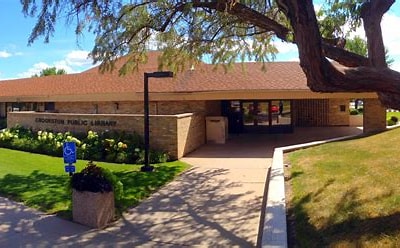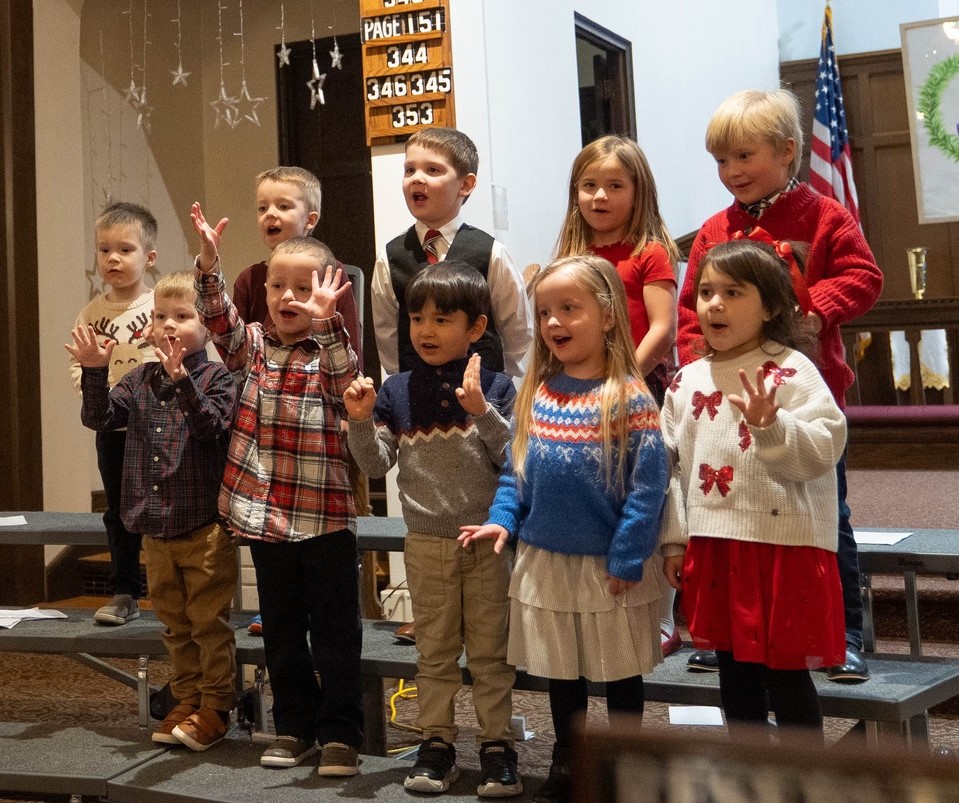When you think of a landfill, the image you have in mind might not be the best. Maybe it’s huge mounds of garbage symbolic with the old town dumps, or perhaps you think of the floating plastic dump in the Pacific Ocean. But for Polk County Environmental Services the landfill is an opportunity to reuse as much of what we throw away as possible.
Learning about Polk County’s waste management system, it comes off as pretty unique. A three-facility waste system like Polk County has is considered mature said Environmental Services Administrator Jon Steiner. And it produces several additional resources. “We have a relatively mature solid waste system,” said Steiner. “We have the transfer station where we collect the material and separate stuff. Then we ship it out to the landfill or the incinerator based on how they have it separated. We have the big processing center at the incinerator and sort the recyclable materials that can be recycled out there and process it now. The garbage we can’t burn comes out to the landfill, and then there are different parts. Like demolition debris can be in the garbage but if it is it costs more and eats up valuable space, so we separate that into a portion of the landfill. The ash we have from combusting the waste is generating steam for our customers. They see how the ash comes in, how we process it. We generate a product that the highway department uses for road projects.”
The County reuses or repurposes whatever waste it can. One of the initiatives to reuse trash is the new compost site, created with a grant last year. Eventually, the compost will be able to be sold. The compost site sits on top of the old site from the 70s and 80s. The old areas weren’t regulated the same way as the cells (areas MSW is collected) are today. Which Steiner says is why the county will need to build a trench to vent the gas from under the compost area passively. “We built a compost pad with state grant funds last year and are finishing that up right now,” said Steiner. “And that, like our demolition landfill, sits on top of the old, unlined MSW landfill from the 70s and 80s. Part of that was we had to create a water basin. It catches the water that comes in contact with the compost material that hasn’t matured yet. When we excavated and lined it that worked well, but, the old, unlined landfill generates small amounts of gas. And that gas will find the path of least resistance which is creating bubbles in that sump. We’ll have to put a trench in to vent the gas off that old landfill passively, so we don’t have any impacts with the compost site.”
The new regulations on cells require a liner and drainage for leachate (the byproduct of water seeping through the landfill as a liquid with soluble or suspended solids). The county is also required to complete air permits, water testing and environmental impact studies completed regularly to minimize a landfills impact on the area around it. “If you look at where the rules have progressed from the 70s to today, it used to be burn and bury in the 70s,” said Steiner. “Now everything is on a liner. You collect all the water. You have all these permits to meet measuring air quality, water quality, groundwater quality, and everything else. There is a push more for composting and recycling a fraction of the waste. Anaerobic digestions and everything else the state is looking at all these new technologies and finding ways of handling waste sort of disposal or landfilling. We’re diversified that way. We have a pretty good option for recycling, and we now have a compost option for that fraction of the waste. So, we’re sitting pretty good that way.”
A new cell is built from the ground up to minimize environmental impact and collect the leachate for water treatment, said Steiner. “When you’re talking MSW, you can’t have those old, unlined facilities anymore,” said Steiner. “They don’t want water that has come in contact with the waste coming into contact with the groundwater. So when we build a new cell, they are excavating out the area of the landfill that we’re going to be building next. They bring in clay. They have to compact it and do a lot of density testing. It has to be a certain quality signed off on by the lab and the state. Once that is complete, they put in a thick plastic liner. The liner is welded together, and pressure tested so we don’t have any leaks. They put a sand blanket over it with a collection pipe in the lowest portion so that all the water that comes in contact with the waste gets run to a collection system. We run that to a pumping system to lift it into tanker trucks. We have an agreement with the City of Crookston to haul it to the city’s wastewater treatment facility. That’s how the state requires we handle our leachate. Its been beneficial for us and the city to have the transfer station in town, the landfill relatively close and a convenient place to take that leachate.”
The ash from the incinerator in Fosston is shipped to the landfill where a large magnet removes any remaining metal debris. The ash is then ready for use on roads, where it will be added between the base and top layers of pavement. They also shred shingles, wood, and tires to reuse on other projects. “Anything we can try to find another use for we do,” said Steiner. “We’ve tried to create some financial incentives. So, haulers instead of brining shingles mixed in with their other debris there is a little bit of savings if they keep the shingles separate. We shred those and can use those for other purposes rather than go in the facility for disposal. Clean, dimensional wood we shred and can use that in the compost. We’re going to use shredded tires to build this trench for the passive gas system next to the compost site. We’re trying to use things and separate things in a way that we create other uses out of it. The concrete and brick get separated we crush that and reuse it. There are a lot of things we try to find further use or life for.”
The county is only using a small percentage of the 360 acres the Polk County Landfill sits on. With the county’s efforts to reuse as much waste as possible, it is foreseeable that the site could be used as a landfill for many decades. Steiner says that over about the next 42 years they will fill in the southern property line and begin moving north through the property slowly. “We got our permit in 2017, and we had to do an EAW (Environmental Assessment Worksheet),” said Steiner. “They only let you project out so far based on your waste coming in the door with what you have as far as a commitment on contracts. They let us go out to about 42 years’ worth of capacity. That takes us straight east to the property line and then a little north. We’ve developed all along the south, so we have the balance of the property still to be developed. There isn’t an immediate need for any space in the future. I think Polk County and the counties we have as partners are sitting in a pretty good position as far as the ability down the road to have a place for the garbage to go.”
The Polk County Landfill is more than just the old town dump. It’s an example of sustainability in finding as many uses as possible for someone else’s trash.




















